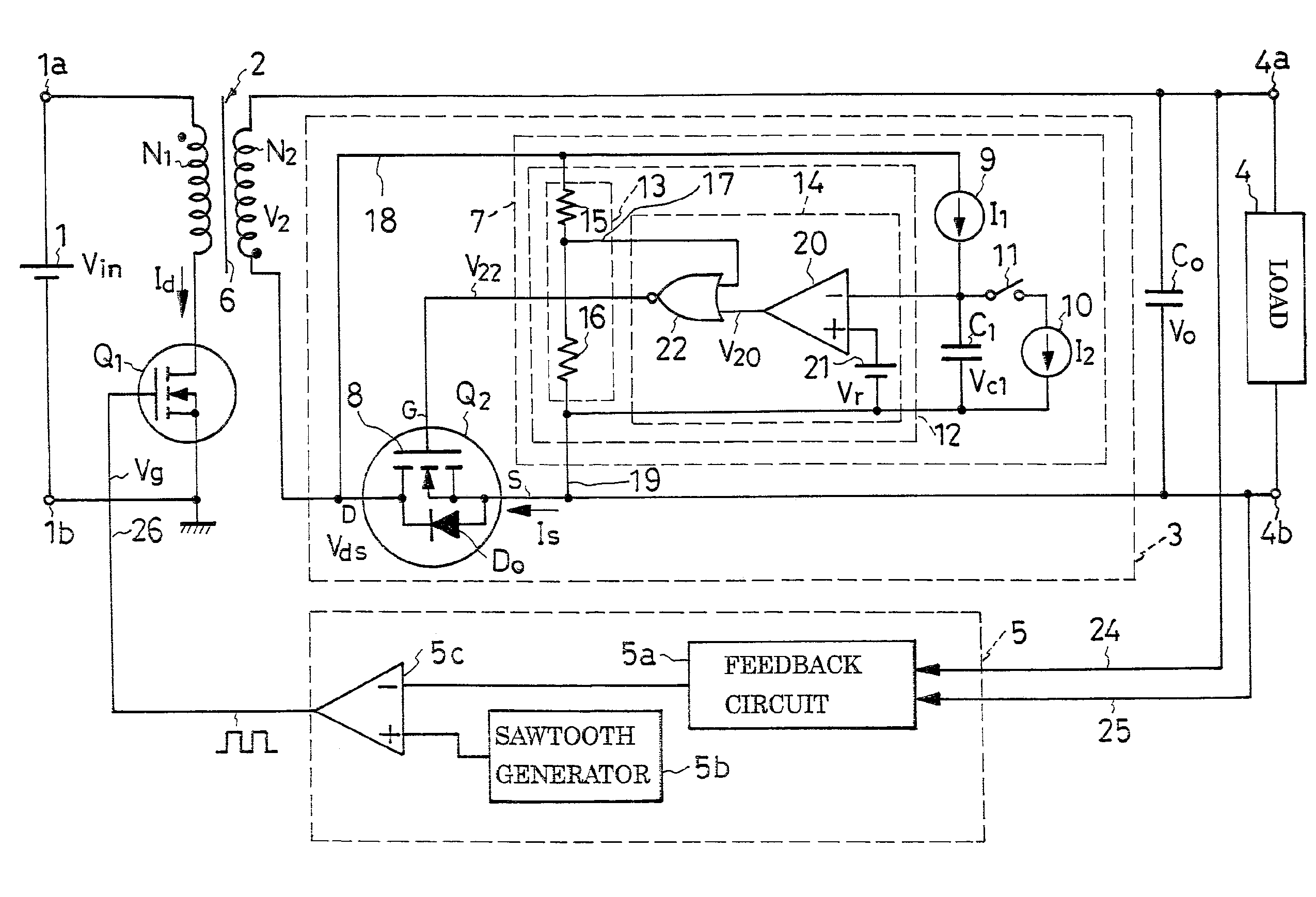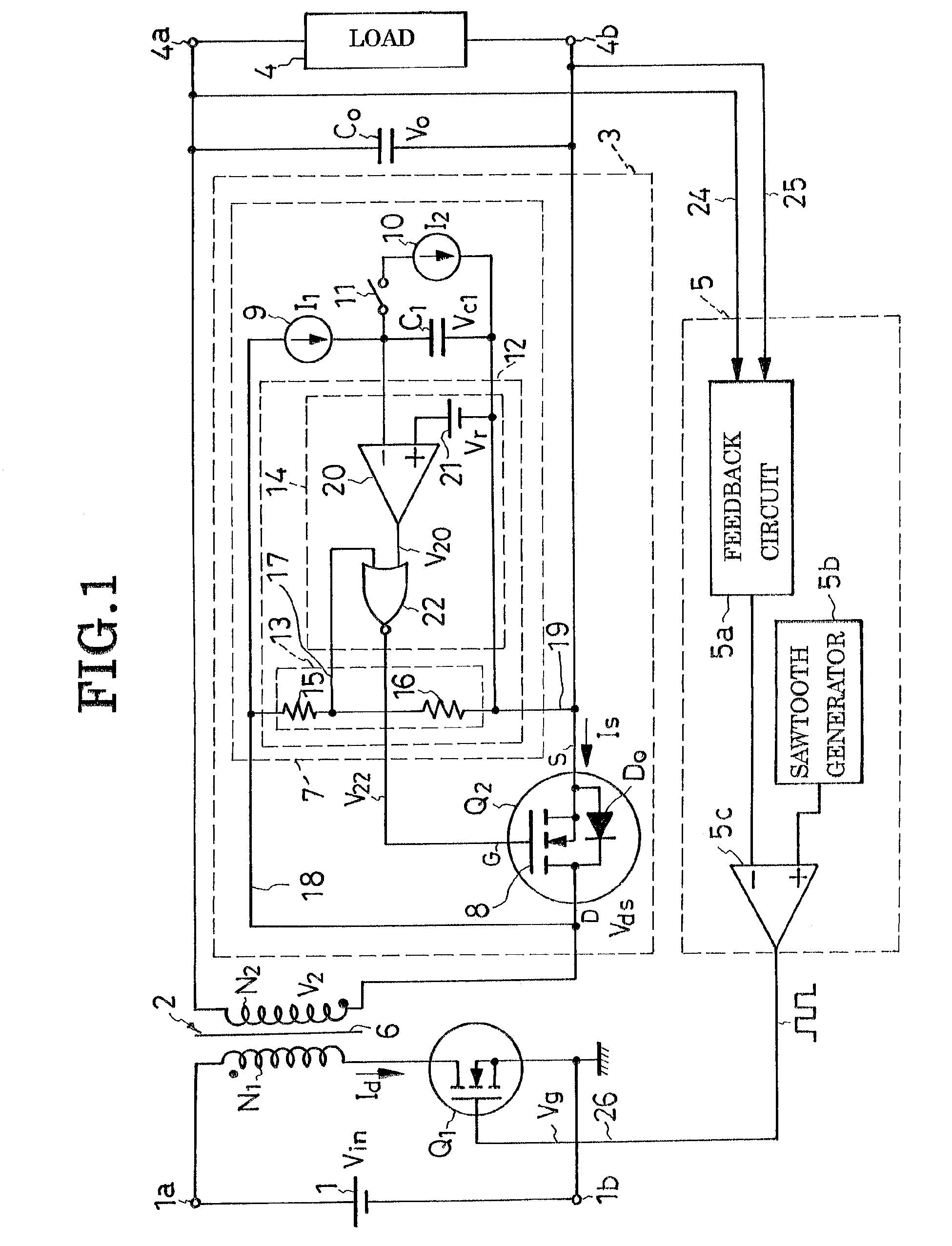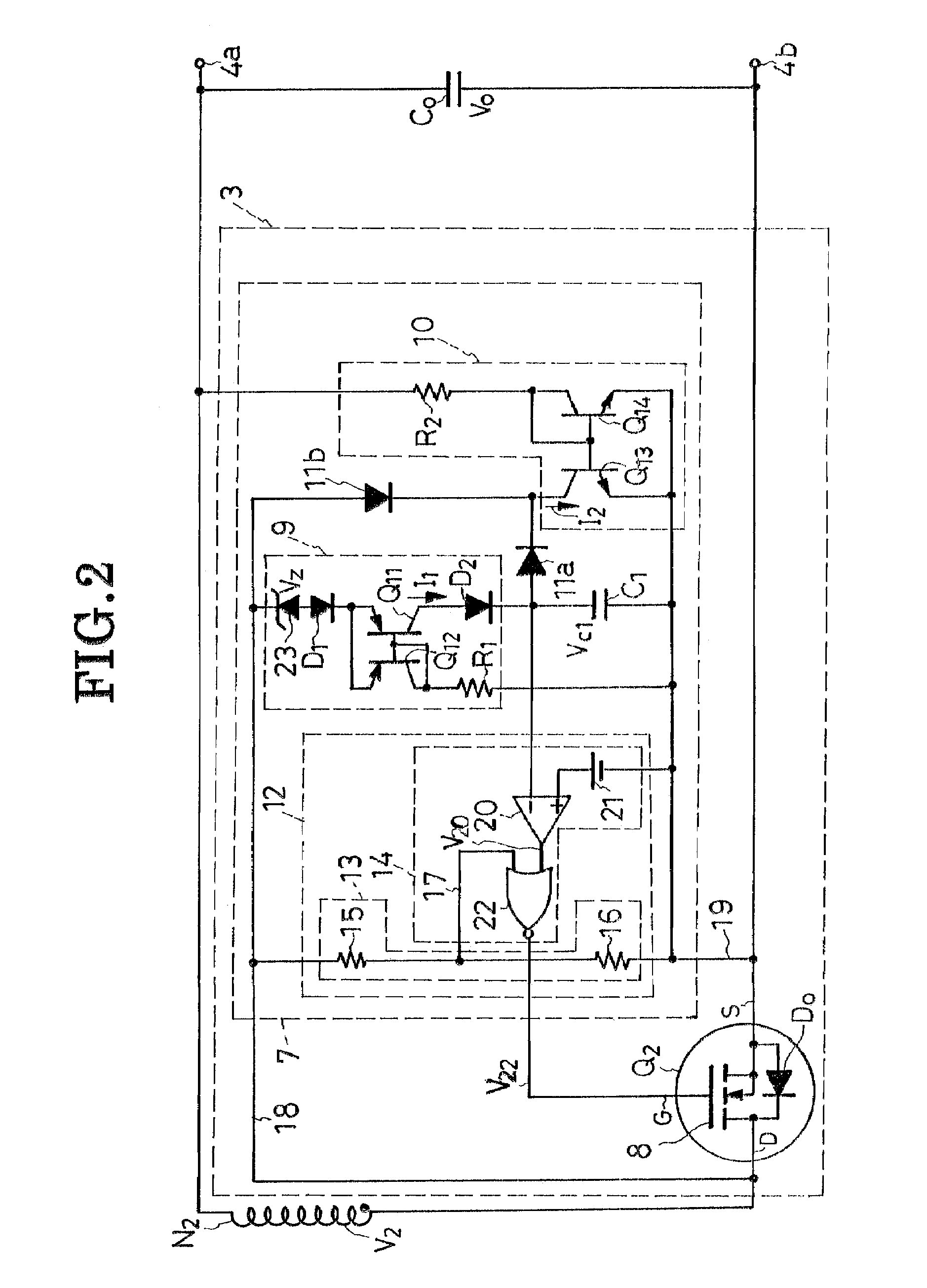Switching-mode power supply having a synchronous rectifier
a technology of synchronous rectifier and power supply, which is applied in the direction of dc-dc conversion, power conversion systems, climate sustainability, etc., can solve the problems of noise production, difficulty in exact synchronization of turning on undesired overlapping of the conducting period of the active switch and the synchronous rectifier switch, etc., to achieve the effect of enhancing efficiency and reducing power loss
- Summary
- Abstract
- Description
- Claims
- Application Information
AI Technical Summary
Benefits of technology
Problems solved by technology
Method used
Image
Examples
first embodiment
[0063]The present invention is currently believed to be best embodied in the switching-mode power supply of flyback DC-to-DC converter type diagramed in its entirety in FIG. 1 of the above drawings. Reference will also be had to FIGS. 2 and 3 in the course of the following explanation of this first embodiment of the invention. With reference first to FIG. 1 the exemplified flyback DC-to-DC power supply broadly comprises:
[0064]1. A pair of DC input terminals 1a and 1b as DC input means shown coupled to a source 1 of DC voltage for providing a DC input voltage Vin.
[0065]2. An inductance means herein shown as a transformer 2.
[0066]3. An active switch Q1 as switching means for rapidly switching the DC input voltage Vin on and off.
[0067]4. A synchronous rectifier circuit 3, to which the present invention particularly pertains, on the output side of the transformer 2.
[0068]5. A smoothing capacitor Co.
[0069]6. A pair of DC output terminals 4a and 4b as DC output means shown connected to a ...
embodiment
of FIG. 4
[0138]Shown in this figure is a modified synchronous rectifier circuit 3a which lends itself to use in the switching-mode power supply of FIGS. 1 and 2 in substitution for the first disclosed synchronous rectifier circuit 3 shown in detail in FIG. 2. The modified synchronous rectifier circuit 3a is itself akin to its FIG. 2 counterpart 3 except for a synchronous rectifier control circuit 7a, which in turn is similar to its FIG. 2 counterpart 7 except for modifications in a first current source 9a. Thus an explanation of the modified first current source 9a and of its operation will suffice for full disclosure of this second embodiment.
[0139]The modified first current source 9a of the synchronous rectifier control circuit 7a differs from its FIG. 2 counterpart 9 in having no zener diode and in having the first collector resistor R1 connected between the collector of the second transistor Q12 and the transformer secondary N2. So modified, the first current source 9a functions...
PUM
 Login to View More
Login to View More Abstract
Description
Claims
Application Information
 Login to View More
Login to View More - R&D
- Intellectual Property
- Life Sciences
- Materials
- Tech Scout
- Unparalleled Data Quality
- Higher Quality Content
- 60% Fewer Hallucinations
Browse by: Latest US Patents, China's latest patents, Technical Efficacy Thesaurus, Application Domain, Technology Topic, Popular Technical Reports.
© 2025 PatSnap. All rights reserved.Legal|Privacy policy|Modern Slavery Act Transparency Statement|Sitemap|About US| Contact US: help@patsnap.com



